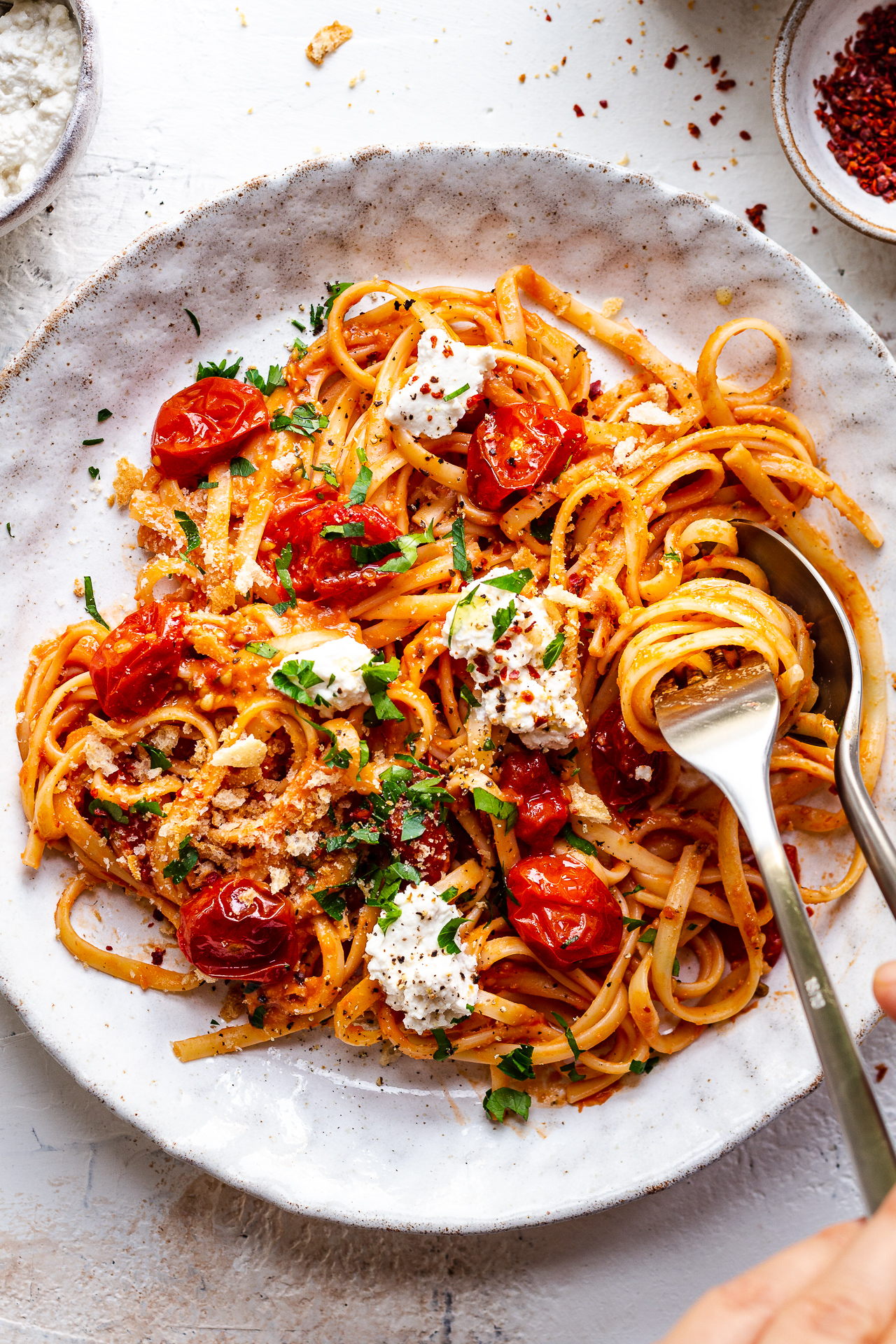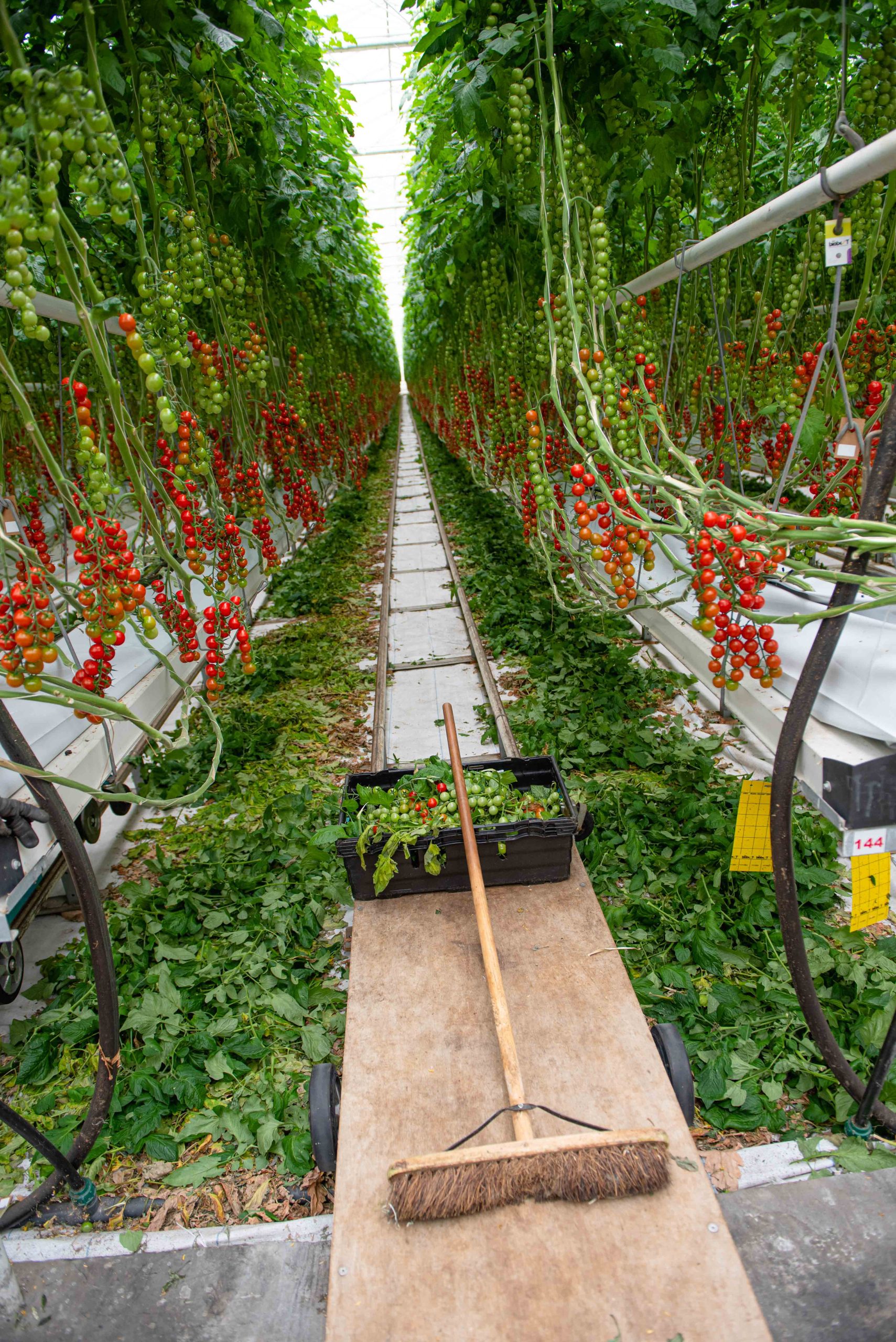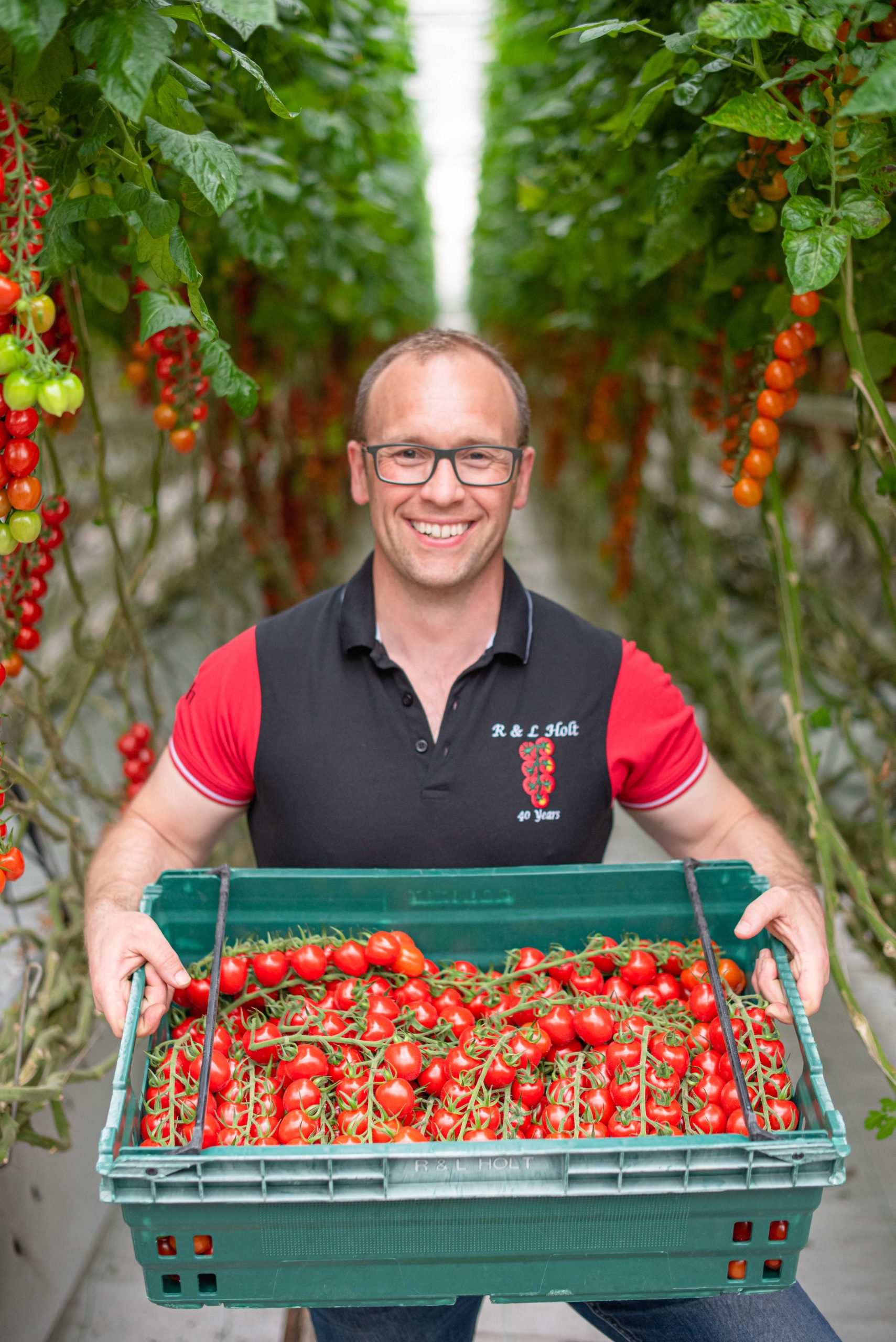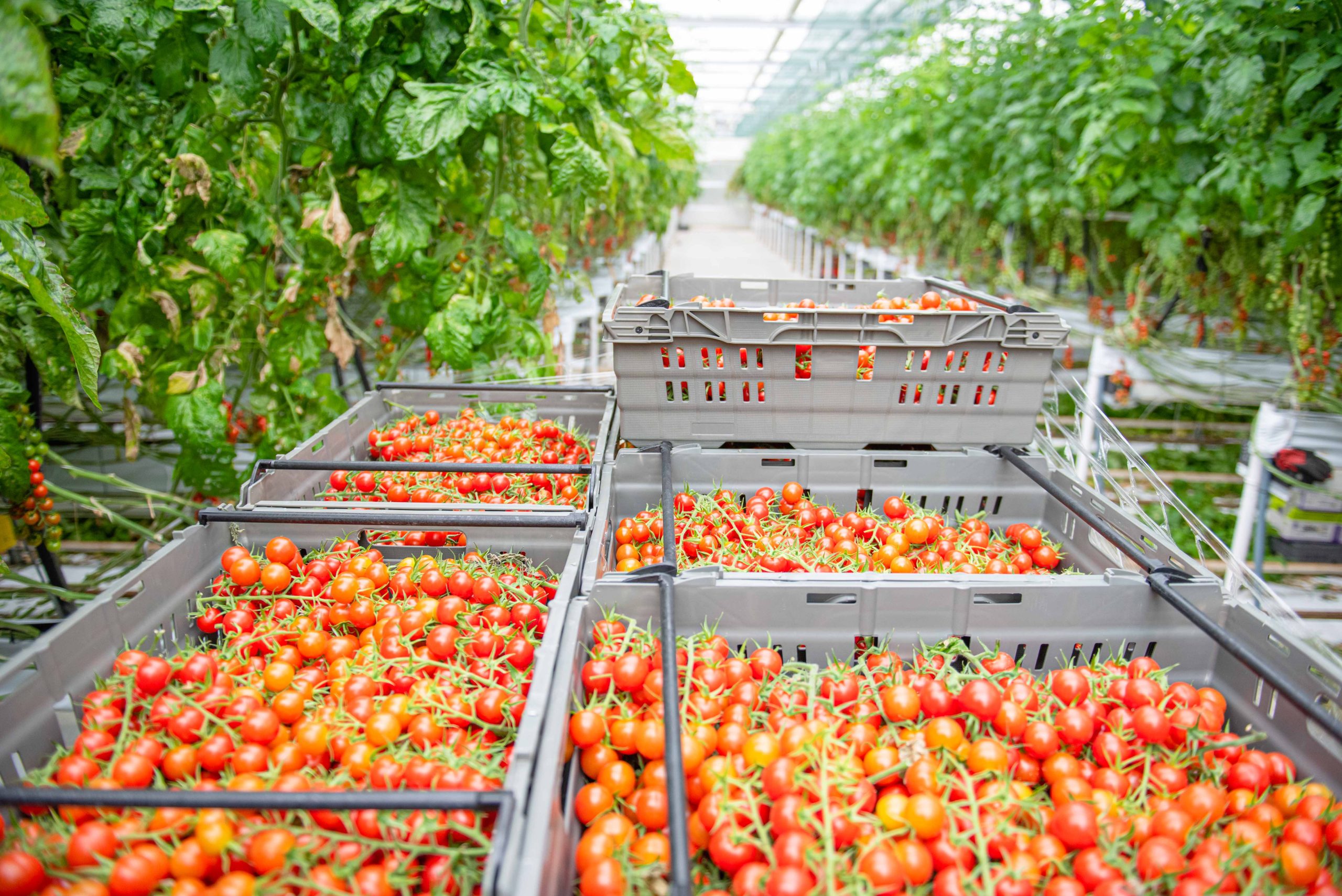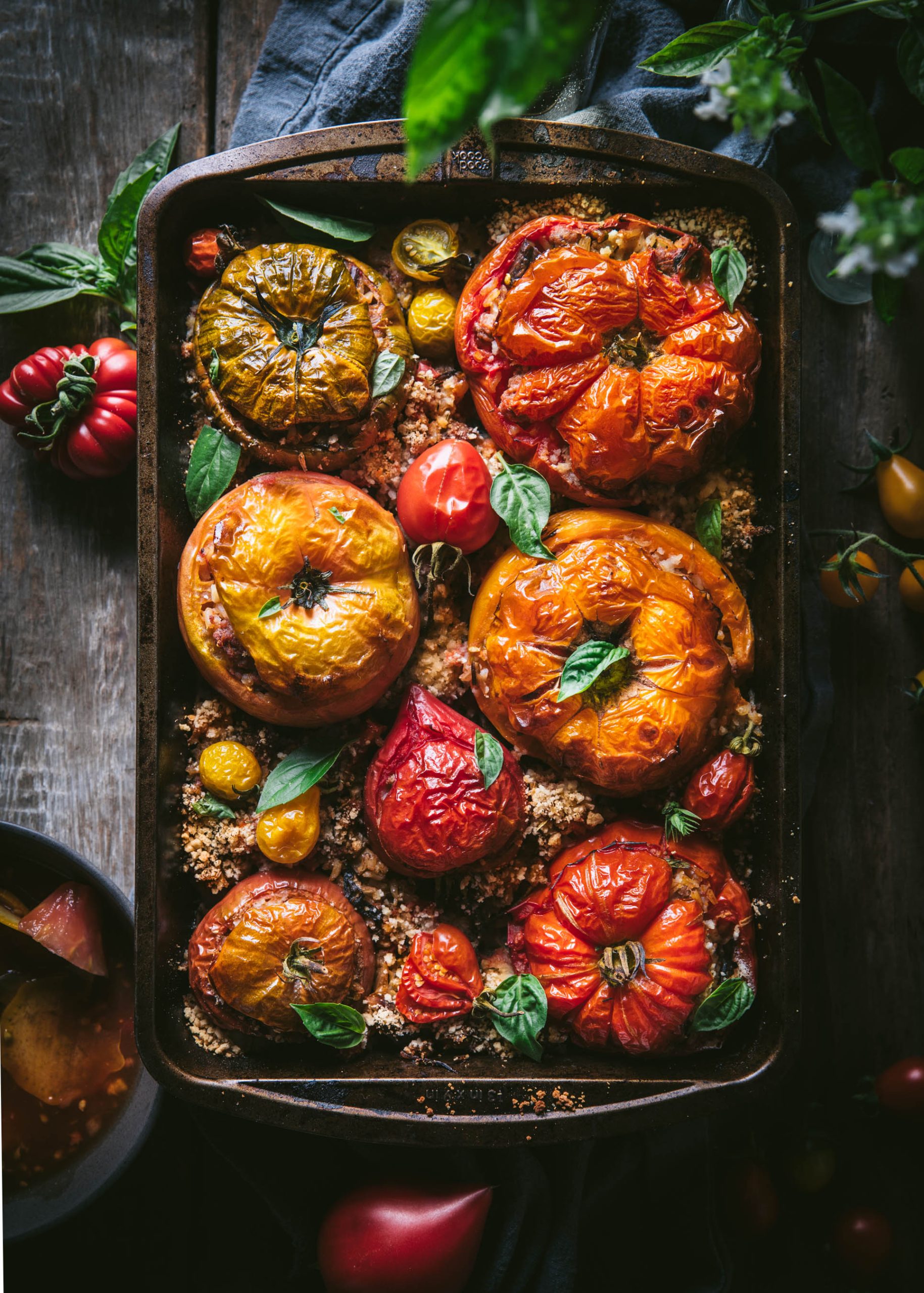Kick off the New Year with a dish that’s fresh, flavourful, and easy to make. This roasted tomato and garlic pasta is packed with vibrant ingredients, perfect for a cosy meal to set a delicious tone for the year ahead.
Ingredients (Serves 4)
- 500g cherry tomatoes (preferably on the vine for extra flavour)
- 4 cloves of garlic, peeled and left whole
- 4 tbsp olive oil
- 1 tsp dried oregano
- 1 tsp chili flakes (optional, for a bit of heat)
- 350g spaghetti or linguine
- 1 handful of fresh basil leaves
- 50g grated Parmesan cheese (or a plant-based alternative for vegans)
- Salt and freshly ground black pepper
Method
Step 1 – Preheat your oven to 200°C (180°C fan/gas mark 6). Line a baking tray with parchment paper.
Step 2 – Roast the Tomatoes and Garlic. Place the cherry tomatoes and garlic cloves on the tray. Drizzle with olive oil, sprinkle with oregano, chili flakes (if using), salt, and pepper. Toss everything together to coat evenly. Roast in the oven for 20-25 minutes until the tomatoes are soft, blistered, and slightly caramelised.
Step 3 – While the tomatoes roast, bring a large pot of salted water to a boil. Cook the pasta according to the packet instructions until al dente. Reserve ½ cup of pasta water before draining.
Step 4 – Once the tomatoes are ready, transfer them to a large mixing bowl or skillet. Use a fork to gently mash some of the tomatoes and garlic to create a light sauce, leaving some tomatoes whole for texture. Add the drained pasta to the bowl and toss everything together, adding a splash of the reserved pasta water to loosen the sauce if needed.
Step 5 – Finish with Fresh Basil and Parmesan. Tear the basil leaves and stir them into the pasta. Sprinkle generously with grated Parmesan cheese. Adjust seasoning with more salt and pepper if needed.

